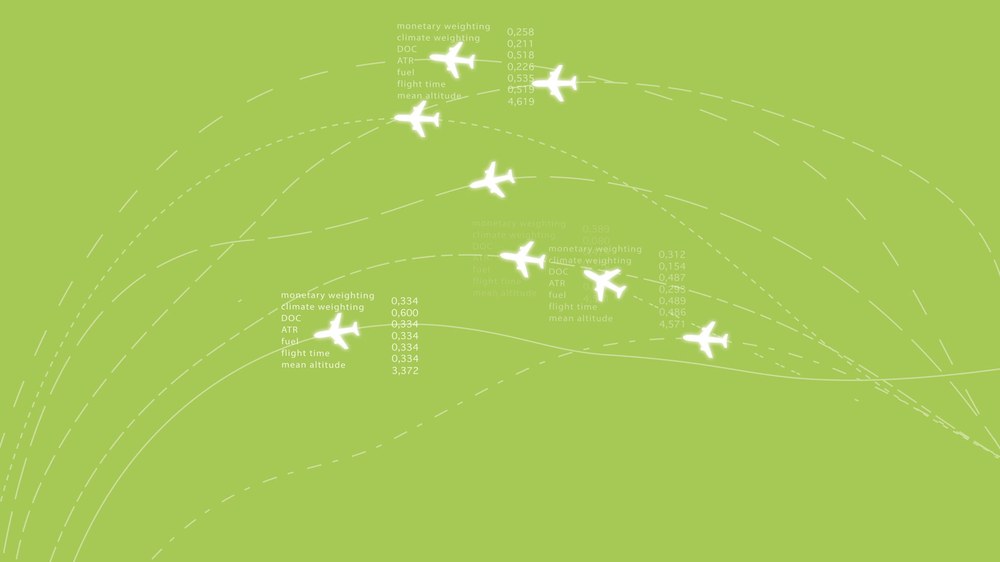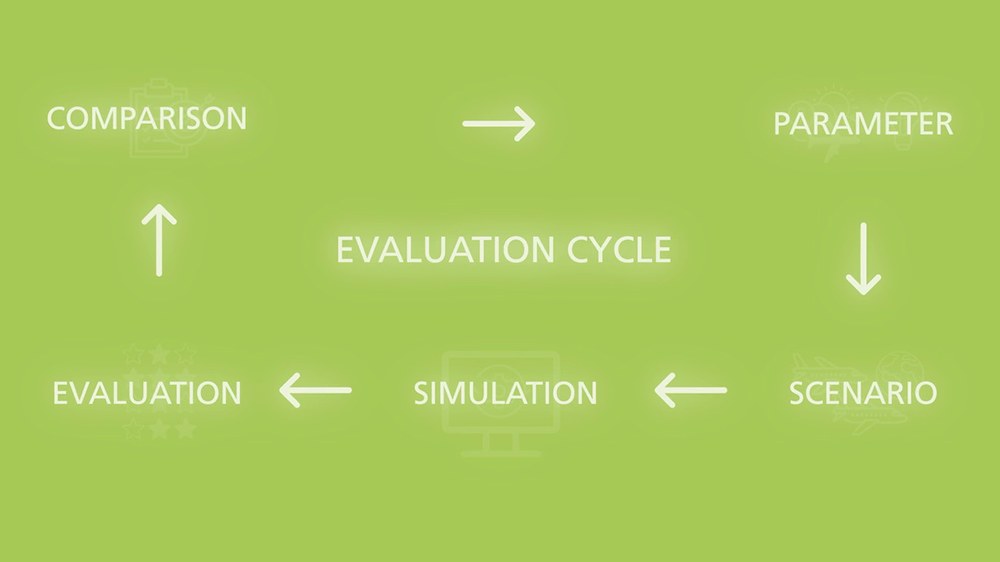DIAL

Individualized flight routes can help limit the man-made global rise in temperature. To achieve this goal, air traffic management must become much more automated than it is today. The project "Individual and Automated Air Transport" (Der individuelle und automatisierte Luftverkehr; DIAL), initiated by the DLR, bundles research to expand the automation of flight guidance. This will enable flight planners to offer customized climate-optimized routes for every aircraft in the sky, avoiding areas in the atmosphere with long-lasting condensation trails, for example.

The DIAL project: Customising individual flight routes for more climate-friendly outcomes
Your consent to the storage of data ('cookies') is required for the playback of this video on Youtube.com. You can view and change your current data storage settings at any time under privacy.
Individual and Automated Air Transport
Today's airspace structures and air traffic management are primarily optimized for safety and capacity. With the right automation, this can be expanded to include climate-friendly target variables such as minimal CO2 emissions and reduction of contrails. DLR researchers are developing procedures in the DIAL project that enable simultaneous optimization according to several climate-relevant factors and increased capacity in air traffic management. The existing safety level is always the benchmark. At the same time, air traffic management should become more productive with increasing automation. This additionally makes traffic management in the sky more robust and flexible when demand increases again.
In order to achieve these goals, seven DLR institutes, under the leadership of the Institute of Flight Guidance, have come together to form DIAL to work jointly on the three sub-areas of the project:
1. Automation for individualized routing
Individually climate-optimized flight trajectories require free capacities in the airspace. These free capacities are made available by additional automation in today's highly complex overall air traffic. Innovative ATM concepts such as "Single Controller Operations" will play an important role here. In the concept, the workload is reduced so that a single air traffic controller can monitor a sector. DIAL is also focusing on the concept of sectorless flight guidance, in which airspaces are no longer divided into sectors. These approaches to transforming air traffic management have been researched by the DLR for some time and are being further developed in DIAL from the perspective of greater automation.
2. Meteorological expert systems for flight planning
In DIAL, researchers are also developing novel meteorological procedures in expert systems which are incorporated into flight planning to support safety and climate protection. These procedures address weather risks such as thunderstorms and icing, extreme events such as volcanic ash and desert dust, and space weather. Weather forecasts of one to five days will improve flight planning in advance. Similarly, short-term forecasts will influence final flight preparation. The execution of the flights themselves will also be supported with weather observations and especially short-term forecasts. Weather information will be integrated into route planning, enabling planners to identify problems and necessary route adjustments. In this way, each route can be individually optimized and adapted to the weather.
3. Evaluation cycles for the simulation of future developments
When flight routes are changed, it is very important to be able to predict exactly what effects they will have in terms of capacity, safety and also climate impact. This is achieved within DIAL through a detailed simulation of future aviation developments. By means of so-called evaluation cycles, it is possible to simulate and subsequently evaluate current aviation goals and their effects including as many influencing parameters as possible. Influence parameters can be, for example, the introduction of new aircraft types or the consideration of new weather data. To this end, the researchers will implement an evaluation cycle in the project and test it with various aviation scenarios. Their goal is to achieve increasingly realistic predictions through a large number of repeated simulations.

Interdisciplinary combination of DLR competencies
A total of nine different simulation campaigns are planned in DIAL over the entire project duration from 2021 to 2024. The concepts of single controller operation and sectorless flight guidance will be validated with humans in real-time simulations. This will be contrasted with automatic simulations of the evaluation circuits, in which all participating institutes will be required to work in parallel
Links
Key data
Project | DIAL (Individual and automated air transport) |
Participants | DLR Institute of Flight Guidance (coordinator) |
Duration | 2021 – 2024 |
Funding | LK5 Efficient Air Transport. The project is funded by the German Federal Ministry for Economic Affairs and Energy (BMWi). |
Website |
